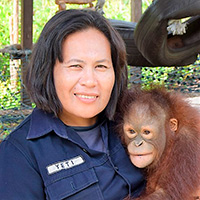What is in a name? Names can be very powerful, reflecting one’s character and identity. Names are associated with family but there is so much more to families than we… Continue reading Orangutan of the Month for June, 2019: Jambul2
Orangutan of the Month for June, 2019: Jambul2












